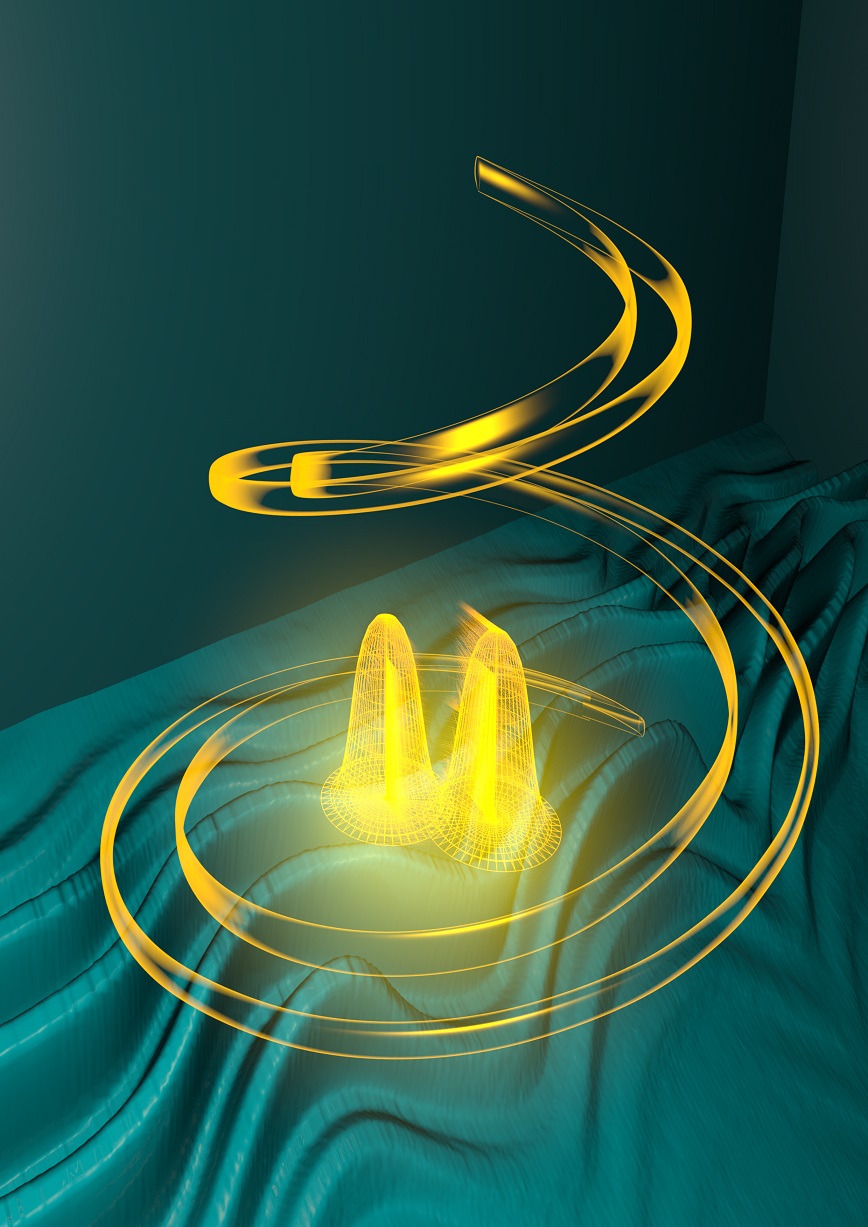18.04.2017
(pug) Usually, two light beams will cross each other without any fanfare. That buzzing hum of clashing lightsabers is merely a cinematic sound effect. Inside a laser, however, intensive light pulses can indeed mutually attract or reject each other. A team of researchers from Göttingen University and the University of California, Los Angeles have now succeeded in tracking such rapid "duels” between two pulses in real-time. The results have been published in the journal Science.
Special light pulses called solitons can mutually attract each other and even enter into bound states. In some respects, these states—detected for the first time 30 years ago by physicist Fedor Mitschke—are akin to the chemicals bonds that atoms form. That is why they are also referred to as “soliton molecules”: either individual light pulses form rigid bonds or they oscillate in excitation against one another. Even in ultra-short pulse lasers, coupled light packages can travel back and forth at intervals measured in less than one billionth of a second. The researcher team lead by Professor Claus Ropers at Göttingen University's IV. Physical Institute recently employed a special detection method to visualize the dynamics of these pulse pairs. "If you send the ultra-short pulses down a kilometre-long glass fibre, the pulses are stretched temporally many times over,” Ropers stated. "This generates an interference pattern that allows the extremely short pulse intervals to be measured.”
"In fractions of seconds, we record millions of optical spectra,” explains the primary author of the study, Dr. Georg Herink. "We are the first to record the formation of a soliton molecule and its rapid oscillations as well as the spin-orbit interactions of the light phase in real-time.” The dynamics result from the sensitive interplay between multiple linear and nonlinear effects within the laser crystal. "Besides the great strides made in the field of laser physics, the results are transferrable to numerous other complex systems where there are similar interacting solitons,” adds co-author Felix Kurtz. Going forward, the scientists are convinced that the technology of real-time spectral interferometry will establish itself in many additional areas of optics and photonics.
Original publication: Georg Herink et al. “Real-time spectral interferometry probes the internal dynamics of femtosecond soliton molecules”. Science 2017, Vol. 356, Issue 6333, S. 50-54, Doi: 10.1126/science.aal5326, http://science.sciencemag.org/content/356/6333/50/tab-pdf

Oscillating molecules from ultra-short laser pulses
Scientists at Göttingen University take images of bound light packages in real-time

Graph of an oscillating pair of laser pulses (yellow). Image: Philipp Kloth, Göttingen University










